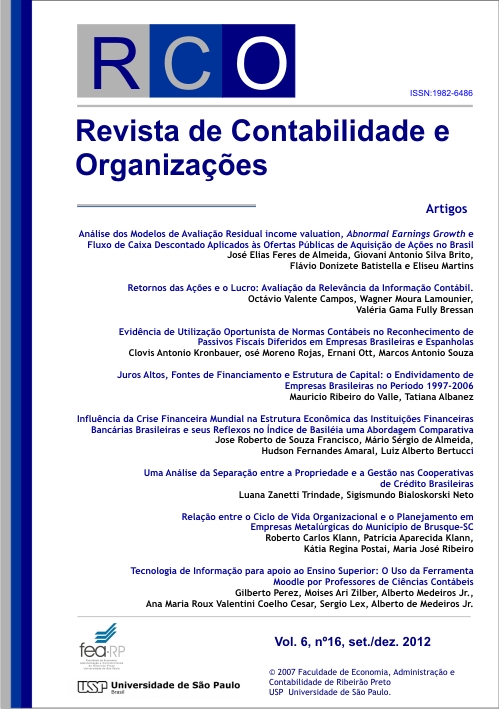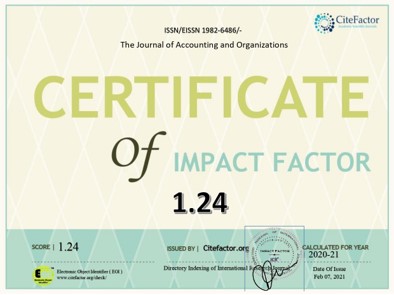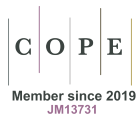STOCK RETURNS AND PROFIT: ASSESS THE RELEVANCE OF ACCOUNTING INFORMATION
DOI:
https://doi.org/10.11606/rco.v6i16.52665Keywords:
Stock returns, Accounting information, Granger Causality.Abstract
This article aims to verify, by testing for Granger causality, the relationship between sets of quarterly accounting earnings and market returns (RET) of Brazilian on the market that have different levels of disclosure requirements. The sample was composed of 75 companies listed on BOVESPA during the period 1995 to 2010, who had 15 consecutive observations and synchronous returns accounting (ROE) and market return (RET), reducing thus the survival bias in these series . In analyzing the results, it was found at the 5% level of statistical significance which most companies had at least some sense of causality, or ROE for the RET, or RET for the ROE. It was also ascertained by analysis at the aggregate level of P-values of the Granger test, which is bi-causality between ROE and RET, concluding that the Brazilian stock market has market efficiency in the sample. It stands out among the main results of this research, which was not found that the causality between ROE and RET is higher for companies that have a higher level of required disclosures of accounting information, allowing to infer that the net profits of companies that disclose more information statements do not have more causality to the market return than other firms. Therefore, we may conclude generally, that despite the importance of accounting information for the stock market, the highest quality and quantity of the information did not generate greater predictive ability of market returnsDownloads
Downloads
Published
Issue
Section
License
The RCO adopts the Free Open Access policy, under the standard Creative Commons agreement (CC BY-NC-ND 4.0). The agreement provides that:
- Submission of text authorizes its publication and implies commitment that the same material is not being submitted to another journal. The original is considered definitive.
- Authors retain the copyright and grant the journal the right of first publication, with the work simultaneously licensed under the Creative Commons Attribution License which allows the sharing of the work with acknowledgment of authorship and initial publication in this journal.
- Authors are authorized to take additional contracts separately, for non-exclusive distribution of the version of the work published in this journal (e.g. publish in an institutional repository or as a book chapter), with necessary recognition of authorship and initial publication in this journal.
- Authors are allowed and encouraged to publish and distribute their work online (e.g. in institutional repositories or on their personal page) before or during the editorial process, as this can generate productive changes as well as increase the impact and citation of published work (See The Effect of Free Access).
- The journal does not pay copyright to the authors of the published texts.
- The journal's copyright holder, except those already agreed in the Free Open Access Agreement (CC BY-NC-ND 4.0), is the Accounting Department of the Faculty of Economics, Administration and Accounting of Ribeirão Preto of the University of São Paulo.
No submission or publication fees are charged.
Up to 4 authors per article are accepted. Exceptionally duly justified cases may be reviewed by the Executive Committee of the RCO. Exceptional cases are considered as: multi-institutional projects; manuscripts resulting from the collaboration of research groups; or involving large teams for evidence collection, construction of primary data, and comparative experiments.
It is recommended that the authorship be ordered by contribution of each of the individuals listed as authors, especially in the design and planning of the research project, in obtaining or analyzing and interpreting data, and writing. Authors must declare the actual contributions of each author, filling the letter to the editor, at the beginning of the submission, taking responsibility for the information given.
Authors are allowed to change throughout the evaluation process and prior to the publication of the manuscript. The Authors should indicate the composition and final order of authorship in the document signed by all those involved when accepted for publication. If the composition and authoring order is different than previously reported in the system, all previously listed authors should be in agreement.
In the case of identification of authorship without merit or contribution (ghost, guest or gift authorship), the RCO follows the procedure recommended by COPE.








